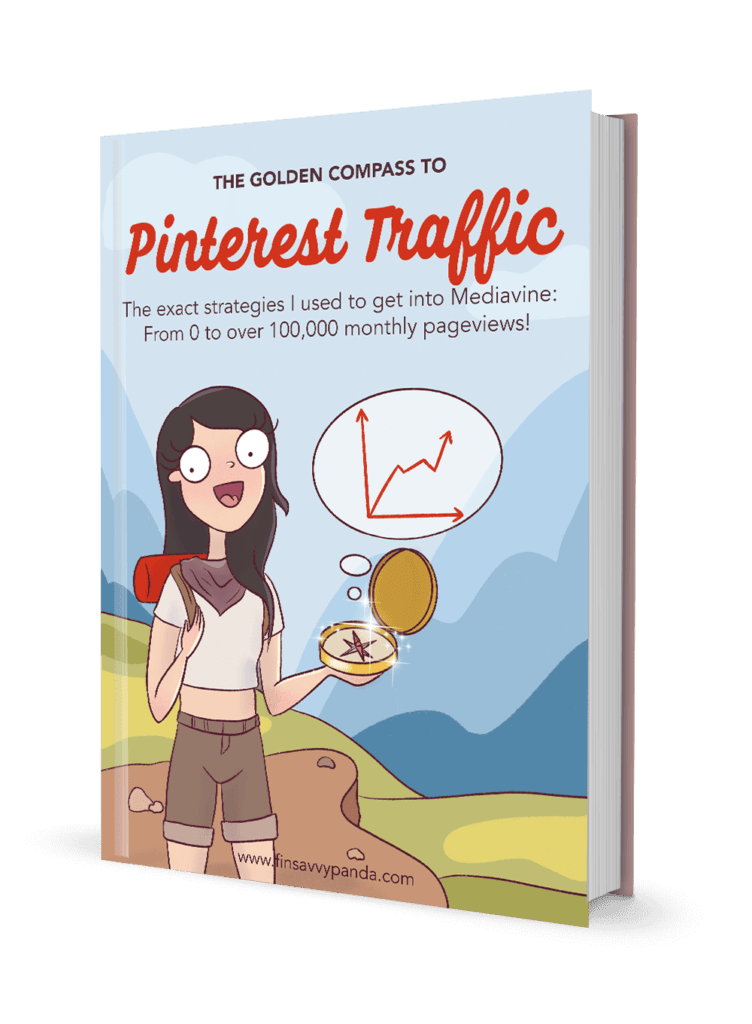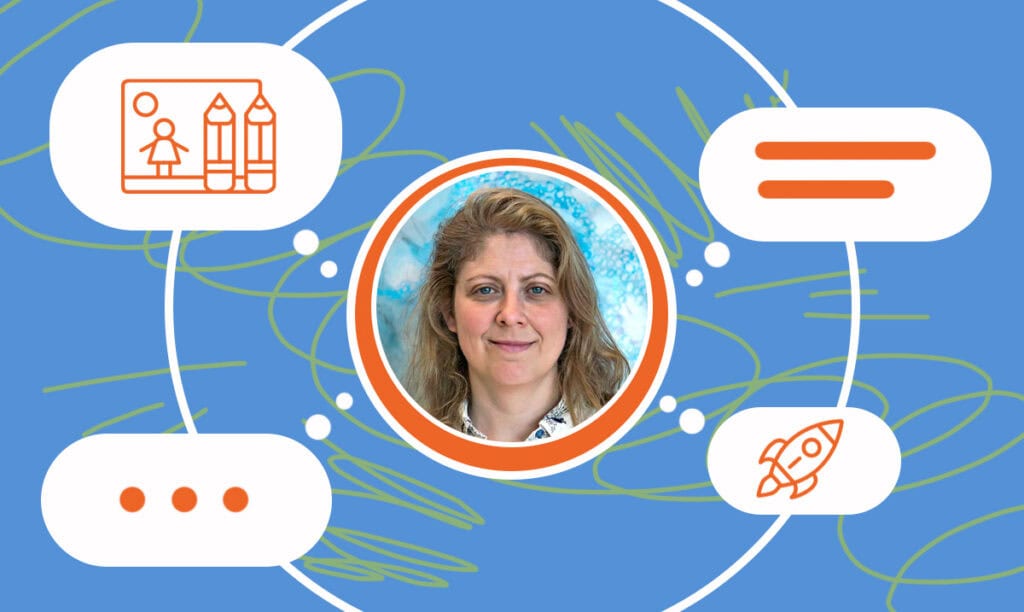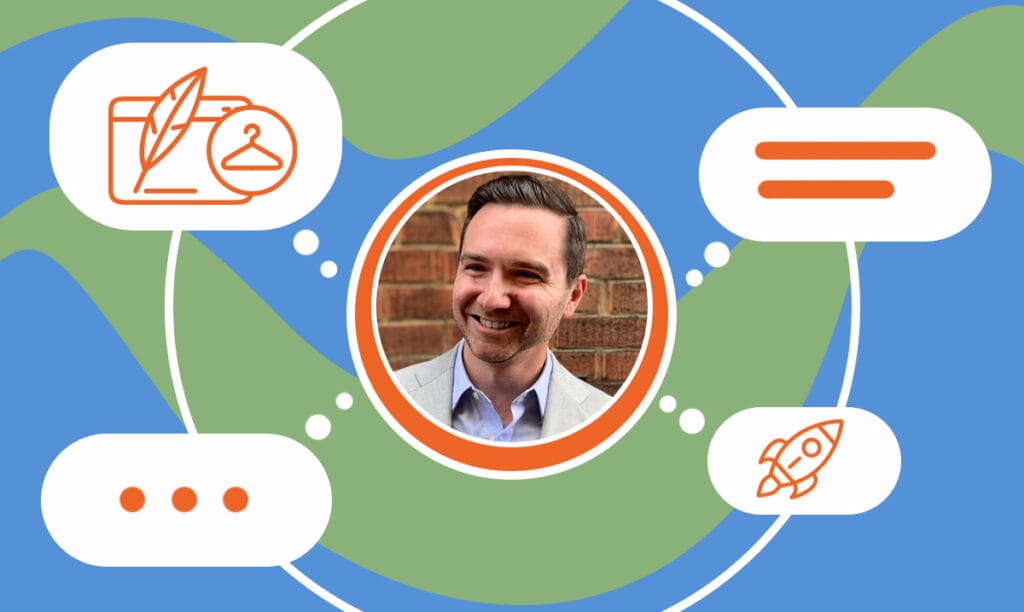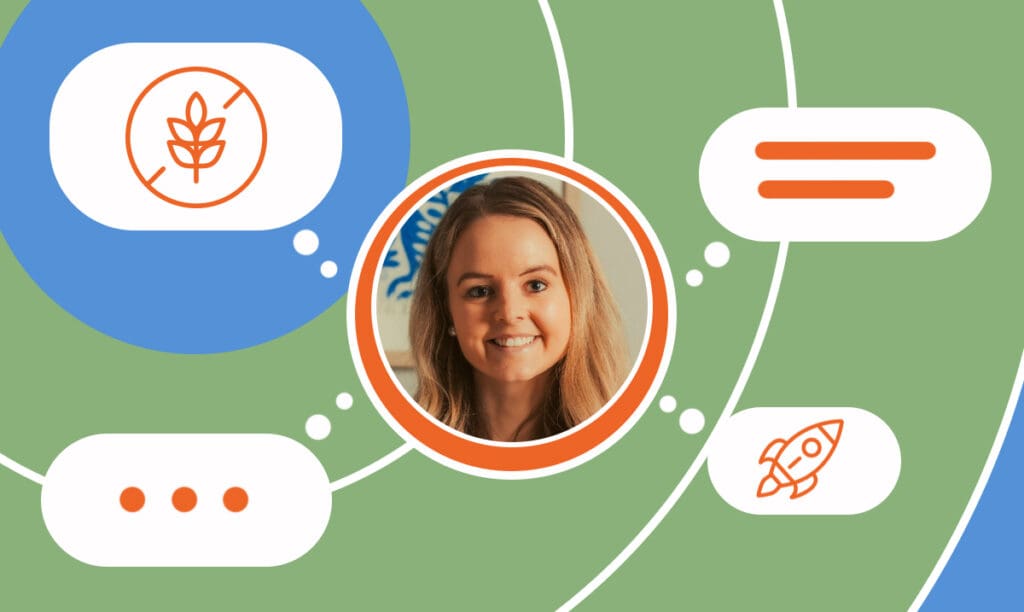Discover the creative mind and journey behind Red Ted Art, a beloved crafting blog that has captured the hearts of parents and children alike. Inthi ...
How a Financial Struggle Led to Ling’s Blogging Success
Written by: Esther Strauss
Esther is a business strategist with over 20 years of experience as an entrepreneur, executive, educator, and management advisor.
Published on March 6, 2024

Join us for an interview with Ling Thich, the creative force behind FinSavvy Panda, a blog where finance meets inspiration. In this conversation, Ling reveals her journey to blogging success, offering invaluable insights for aspiring bloggers and anyone eager to transform their financial future. Get ready to be inspired by Ling’s story of persistence, innovation, and the power of a well-crafted blog.
Starting the Journey
SBS – What inspired you to start FinSavvy Panda, and how did you identify your niche in personal finance and blogging tips?
Ling – Back when I was working at a bank, I was always trying to figure out how to make extra money. Even though I was pretty diligent and mindful about saving money and putting my paycheck into investments, it hit me that this alone wouldn’t be enough if I wanted to be financially independent in my 30s. That’s when I started thinking about starting my own thing on the side.
The idea for a blog name like “FinSavvy Panda” popped up because, honestly, everyone around me, like my friends, family, and even coworkers, was asking me for money advice. They’d ask me all sorts of questions about how to save better, invest in stocks or real estate, and even start side gigs or businesses. They saw me trying out all these things to grow my wealth and were curious about what worked for me based on my own experiences.
As I was trying different side hustles like flipping furniture, selling clothing, and making homemade crafts, I was on the lookout for other gigs and business ideas. Here is one of my first furniture flips from many years ago (before and after):


During this time when I was trying out different side hustles, I was also researching how to open a Japanese variety store but found their minimum of $1 million capital requirement to be absurdly high!
So, one day, through a Google search, I came across all these bloggers online making crazy amounts of money, and I thought, “Why not me?” So, I jumped right into the idea of starting my very own personal finance blog!
That’s when FinSavvy Panda was born!
As I shared my journey of tackling student and car loans, growing my wealth through investments in stocks and real estate, and hitting my first big milestone of a net worth of $1 million, I started noticing a pattern. My readers were interested in how I was earning extra income with my blog. They began to show even more interest when my blog started earning over six figures a year. This interest inspired me to launch a second blog within the lifestyle niche so I could share my insights on how to create a profitable blog in various niches.

Challenges and Solutions
SBS – Can you describe some of the initial challenges you faced when starting your blog and how you overcame them?
Ling – I remember when I bought my hosting plan on a whim. I felt very lost and had no idea what it takes to build a profitable blog. You could say that one of the most significant challenges I faced when starting my blog was not knowing what I didn’t know.
I was naïve and believed all those glamor stories of entrepreneurs effortlessly earning six to seven figures, which set me up for a serious wake-up call.
In the beginning, I didn’t realize the amount of work required to get my blog off the ground. From playing with the various theme setups, figuring out how to monetize a website, understanding SEO, and growing a social media presence — the list was endless. In hindsight, I was missing out on these components and that left me feeling pretty hopeless.
Three to four months in, with zero progress to show, I was extremely frustrated!
However, I started seeing positive results once I decided not to give up. I doubled down on my efforts by learning Pinterest really well so that I could increase my traffic. Getting traffic was my main focus at that point. On top of that, I tested and implemented a lot (and I mean A LOT) of strategies using the trial-and-error method. This hands-on approach taught me that no course could ever teach or replace the value of personal experience. I learned the hard way that what works for one might not work for another, and vice versa.
This challenge taught me the importance of testing and learning from my own experiences rather than taking people’s advice at face value, which I did a lot when I was new to blogging.
Traffic Generation Strategies
SBS – What strategies have been most effective for driving traffic to your site, particularly in the early stages of your blog?
Ling – I started with Pinterest and still use it today, but I’ve since added Google to my strategy as well.
What I love about Pinterest is I can drive over 100,000 pageviews from this platform alone! I even have a post about how I use Pinterest traffic to drive pageviews to my blog.

Monetization Tactics
SBS – Could you share your experience with different monetization methods for your blog? Which ones have been the most successful for you?
Ling – I diversify my blog income through affiliate marketing, display ads, and selling my own digital products.
I never expected affiliate marketing to be one of my biggest earners, but it has been that way for me since the initial stages of my blog.
During that time, I felt uncomfortable that most of my earnings were from affiliate marketing but since then, I have diversified my earnings with Mediavine display ads and my own product creations like The Power-Up Budget Binder, The Treasure Map To Blogging Success in 30 Days, PinSavvy Pinterest templates, and The Golden Compass to Pinterest Traffic.



Content Creation Process
SBS – How do you approach content creation, and what tips can you offer for consistently producing engaging and valuable content?
Ling – To be honest, content creation hasn’t been my biggest strength because I’ve been more focused on my readers and building up my email list. Because of that, I’ve been sticking to publishing one article a week. It was even less at the start — on average, it was like two articles a month three years ago. But I’ve bumped that up to once a week now.
Even though most of what I write is meant to last (you know, evergreen content), I still go back and update things once in a while. Evergreen content doesn’t really get old, but it does need a little refresh every now and then, unlike news and trends which require daily new publications.
Despite not being my strength, I can offer a few tips on being consistent in publishing at least once a week. I recommend creating a list of at least 10 blog post ideas ahead of time. Then, I would set two days during the week and batch write up to five posts from scratch without caring about grammar, spelling, or punctuation. It’s just to have the ideas and meat of the content ready. Next, I would batch edit and polish them.
Personally, I find that batching is very effective but again, what works for me may not work for someone else. Everyone is different and you just need to find and develop a habit that you can maintain consistently.
Building and Engaging the Audience
SBS – What techniques do you use to build and engage your audience, and how do you maintain a connection with them?
Ling – For the past six years, I’ve made it a point to personally respond to most of my readers’ emails, and honestly, even though it’s a lot of effort, that’s what really works for me.
When I reply to them personally, it shows them there’s a real person behind the screen – not just some robot or outsourced support team. I take the time to get to know my readers, building a personal connection with each of them. It’s always a nice surprise when they email me over the holidays just to say hi, wish me well, or even send holiday greetings like Merry Christmas, Happy New Year, or Happy Thanksgiving.
I’ve found that being personable and easy to reach out to helps build trust. To them, I’m more like a friend than someone just trying to sell something. It’s all about that personal touch and showing you genuinely care.
Time Management
SBS – As a blogger, how do you manage your time effectively, especially when balancing blogging with other responsibilities?
Ling – I used to do a lot of random tasks on the go with zero plans, and that’s when I realized that it gets things quite messy, stressful, and chaotic.
Today, for me, balancing blogging with life’s other demands is about prioritizing and scheduling. I make sure there is a system and process in place, so things are running smoothly on a daily basis. My routine includes setting aside specific blocks of time for writing, researching, and connecting with my audience. This is all tailored around my highest peak productivity window, which is from 9am to 12pm.
I start my day with a light workout because it energizes me, leading to my focused work period.
I must also say that practicing intermittent fasting daily for over three years has been life changing for me. It not only benefits my health but also streamlines my day by reducing meal prep time. That falls in nicely with my time management, especially since I handle most of the cooking and meal planning.
After my first meal, I go for a walk and that refreshes me, which allows me to work on my blog for another one to two hours if needed. By 5pm, I start cooking dinner and I will turn off completely from my blog after I’m done dinner.
This gives me the healthy work-life balance I’ve always strived for, allowing me to also enjoy quality time with my family.
The best way to balance my life is to simplify my routines, ignore distractions, and delegate tasks. Being disciplined and mindful of my time keeps me focused and efficient on most days.
SEO Insights
SBS – How important has search engine optimization (SEO) been in your blogging strategy, and what basic SEO principles would you recommend to new bloggers?
Ling – Google SEO hasn’t been extremely important to me since most of my traffic comes from Pinterest SEO. However, any additional traffic is still traffic and makes an impact.
To see positive results in the long run with your SEO strategies, whether it be Google or Pinterest, I recommend beginners come up with a list of at least 15 to 20 blog post ideas that are all related to each other and ensure that each post is keyword-targeted.
For example, if you want to start a beauty blog, blog post ideas related to each other could be about makeup looks or all skin care advice (not both since makeup and skincare are two different things). To illustrate this visually for skin care advice, you may want to write posts like:
- Best Skin Care Products For Dry Skin
- Best Skin Care Products For Oily Skin
- Best Skin Care Products For Normal Skin
- Korean Seven-Step Skin Care Guide
- How To Use Retinol
- Retinol vs. Tretinoin
- Best Vitamin C Serums
- Best Ordinary Products
- The Ordinary vs. Skinceuticals Vitamin C
- The Ordinary Vitamin C Suspension HA Spheres Review
- Skinceuticals Vitamin C Review
- Cosrx Snail Mucin Essence Review
- How To Double-Cleanse Your Face
- Best DIY Skincare Recipes
- Best Korean Sunscreens
- Top Skincare Foods
Noticed how all these posts are related to each other? They aren’t scattered all over the place from makeup looks to hairstyles and nails. It’s just skincare and this makes your blog more focused. This, in my opinion, shows your expertise and retains your readers better since they are here for one thing — skincare. They’re not here for makeup, hairstyles, or nails. Not only that, but it makes it easier for you to link these articles to each other naturally within your other posts.
Next, you’ll want to implement Google and/or Pinterest SEO strategies to these articles you write about by identifying keywords or phrases most people search for. For illustration purposes for a post like “How To Double-Cleanse Your Face,” you could incorporate keywords and answer questions within this post such as, “Can you double cleanse your face with coconut oil?” or “Can you double cleanse your face with micellar water?”
In fact, with those two different questions, you could even write two separate posts answering those very specific queries depending on the search volume for those questions.
I only illustrated skin care as an example, but you can apply the same concepts to any niche.
You can also look for a beginner’s guide to SEO on websites like Moz and Ahrefs. For Pinterest, you look for more information on Pinterest’s website about Pinterest’s best practices. This is where I would start.
Social Media Influence
SBS – How has using platforms like Pinterest contributed to your blog’s growth, and what advice can you give about leveraging social media for blog promotion?
Ling – Using Pinterest has significantly increased FinSavvy Panda’s blog visibility and traffic,, including my anonymous lifestyle blog, which I work on as a side project.
It’s generally thought that niches like personal finance don’t do well on Pinterest and won’t get a lot of exposure on this social media. Many believe it’s only for Pinterest-friendly niches like beauty, food, and general lifestyle. Yes, that is true. You may have an easier time driving a lot more traffic to those niches (as I see with my other general lifestyle blog).
However, based on my personal experience with the personal finance niche, it can drive over 200,000 monthly pageviews alone when you follow and implement Pinterest’s best practices.
To leverage Pinterest for your traffic, my tip is to create eye-catching, pin-worthy images that link back your blog posts. These Canva templates are just an example of what I call Pinterest-worthy pins and they’re exactly the styles and titles I use to drive most of my Pinterest traffic.


You’ll also hear experts tell you to create boards and pins with click-worthy descriptions and to optimize your profile and pins with Pinterest SEO. But despite all of that, I can attest that the key here is consistency and understanding the Pinterest algorithm to ensure your pins get the maximum exposure. When I say “consistency,” you have to be doing the right things (which is a lot to list) so you can seek for this information in my other post about how long it takes for you to get traffic on Pinterest.
I see many people who are consistent but are doing the wrong things without realizing. For example, pinning every day without a strategy won’t get you far. On the other hand, I also see people who are implementing the right strategies (e.g., optimizing boards, profiles, pin descriptions, pin design, etc.) but aren’t consistent.
As you can see, you need to be consistent AND implement the right strategies within your control.
Along with that, you do need a little bit of luck on your side. In this case, luck depends on the Pinterest algorithm (like any other social media algorithm) and whether or not that algorithm favors you, which is out of your control.
When the algorithm isn’t favoring you, and you are pretty certain that you’re implementing the right strategies consistently, then you just have to continue doing what you normally do and wait until the algorithm reshuffles again.
Earning Expectations
SBS – What is a realistic expectation for new bloggers regarding earning potential, and how long does it typically take to start generating income?
Ling – I would say a realistic time to see your first $1,000 would be past the six-month mark. It could be from month six to even a year. I admit it was a little easier in the past for beginners to see their first earnings before hitting the six-month mark, but the blogosphere has changed, and algorithms like Google and Pinterest may require your blog to be a bit older.
However, I’m not saying it is impossible today to start making money with your blog almost immediately. In fact, those with experience or connections in the field might start earning in just a few months. That, though, isn’t going to happen if you are a beginner with no prior experience or know people within the industry.
I only bring this up because I see many beginners have unrealistic expectations of earning a full-time income within three to six months.
Key Learning Experiences
SBS – Looking back, what are some key things you wish you had known when you started blogging?
Ling – I am reflecting on my blogging journey as I write this, and honestly speaking, I’ve realized that sometimes, not knowing the full extent of what you’re getting into can actually be a blessing.
The truth is, if I had been fully aware from the start of all the effort required to run a successful blog, I might have been too overwhelmed to even begin. You can say, “Ignorance is bliss.”
Now, a few years ago, if you asked me this same question, I would say I wish I knew the importance of backlinks in the Google space and networking with other business owners to build a solid foundation for your blog.
Today, I am just grateful for my personal blogging journey and the lessons I learned along the way (despite making so many mistakes) rather than wishing I had known what I know now.
Understanding the value of backlinks and networking came at the right time, contributing significantly to where I am now. It’s taught me to appreciate my progress instead of wishing for what I should have known — and honestly speaking, I am okay not knowing because even though I didn’t know what is so obvious to me now, it was still possible for me to earn a consistent net six-figure income for all these years. Knocking on wood.
Advice for Aspiring Bloggers
SBS – What is the most important advice you would give someone looking to start a blog today?
Ling – Treat it like a journey, so avoid excessive planning or trying to perfect everything. It’s important to plan but there is a limit to how much you can plan for. If you plan too much, you will overcomplicate things and end up feeling frustrated.
Plus, you will most likely make more mistakes than you could imagine despite all the planning you do. So, just plan enough, implement, and learn on the spot. Nothing is better than a hands-on learning experience.
It’s important to strike a balance: plan sufficiently, but be ready to take action and learn as you go. You’ll also want to keep an open mind and be able to adapt to any changing environment. For example, Google and Pinterest are constantly changing their algorithms along with other platforms, so you have to be ready to switch gears if needed.
Future Plans
SBS – What are your future plans for FinSavvy Panda, and how do you see your blog evolving in the next few years?
Ling – Since the blog only releases one article a week, the next plan is to publish more content and get that up to twice a week.
I also plan to learn a different social media platform, like Facebook or even YouTube, so that I can increase and diversify my traffic.
Beyond that, let’s just wait and see what happens.
Subscribe to Our Newsletter
and gain insider access to cutting-edge business insights and trends.
Featured Resources

How Red Ted Art Became a Crafting Sensation for Parents and Kids
Published on July 19, 2024
Read Now

Dave Bowden’s Guide to Starting a Men’s Fashion Blog
Published on April 3, 2024
Welcome to our interview with Dave Bowden, the creative force behind Irreverent Gent, a distinguished blog in the realm of men’s fashion andli ...
Read Now

How Addison LaBonte Creates Delicious Gluten-Free Recipes
Published on March 27, 2024
In an inspiring conversation with Addison LaBonte, CEO of Sweet Addison’s and Organically Addison, we delve into the innovative world ofhealth ...
Read Now
Comments